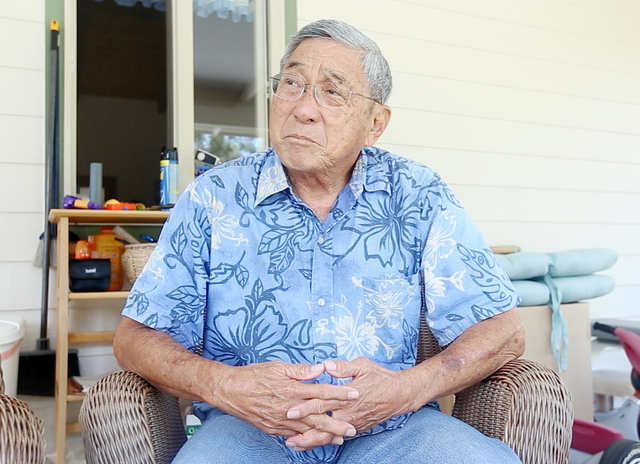A communication breakdown became apparent Wednesday evening at a community input meeting involving proposed cuts to East Hawaii’s safety net hospital system.
Facing a $7 million shortfall in the next fiscal year, Hawaii Health Systems Corp.’s East Hawaii Regional Board voted last month to propose cuts to East Hawaii’s Home Care Services, one wing of adult inpatient psychiatric care at Hilo Medical Center, and a reduction in the number of long-term care beds at all facilities.
In order to follow through with the proposed cuts, HHSC must present them to the public and consider public comments before a final vote. But members of the public have balked at the proposals, asking members of the East Hawaii Regional Board to reach back into their bag of tricks and come up with a way to keep from cutting vital health care services on Hawaii Island.
Former Mayor Harry Kim seemed to speak for many in attendance when he said he felt making any cuts at all would put the health system on a slippery slope, especially for such an underserved community as the Big Island, in comparison with Oahu, where one can drive down the road and pass another hospital “every 20 minutes.”
“I totally disagree with the direction you’re going as a board,” he said. “… If this budget is approved, it’s a downhill slide. … It’s shortsightedness. … We’re at the edge of a cliff. … I really am asking your board, at the very last minute, to put together a (new) budget based for the needs of this island.”
In response, board member Joseph Scrutch said that the board had already considered the needs of the island as part of its budget process.
“Mayor Kim, I tend to disagree. I think we already did exactly what you asked, and the state Legislature and the governor have given us $30 million and we’re short $7 million. We put together what we thought we needed at a minimum to go forward, and they said ‘That’s too much,’” he said.
“So, it’s a budget problem at the state level. You can talk to the state representatives and senators that are in this room, but they’ll tell you, we asked for more money, and the governor said very bluntly, ‘There is no more money. That’s it.’”
Tandy Newsome, quality management director at Hilo Medical Center, said she believed that health care should be one of state government’s top priorities.
“I want to say first that this hospital doesn’t provide a lot of luxury services, we provide basic, essential services that are needed by everyone. We’re not like Oahu, we don’t have a hospital on every corner,” she said.
“To me, this is the role of government. To be able to provide essential services to all the community. As soon as we start cutting services for our community, we’re going to have people traveling to Oahu to get care, which means families are divided. People are not gonna be very happy. … This is government’s role, to help us fund the essential services.”
In response to such comments, state Rep. Clift Tsuji, D-Hilo, seemed to be defensive, pointing to examples of support that legislators have given for East Hawaii’s health needs in the past, such as a new, state-of-the-art emergency room for the hospital, which was completed several years ago.
“I’d have to take a back seat and look and say ‘Aah,’ as some of you people start nodding your head and say ‘Where’s the Legislature for what they’re doing?’” he said as he pointed to the HHSC board members. “Yes, there are people (Legislators) in Honolulu, but without their help, we would get no, no money. … This last legislative session, for the hospital system and basically this district over here, the East Hawaii Region, we have about $5 million committed. I think you owe it to yourself, as a responsiblity, (to know) where that money is going. … This facility has NOT been forgotten.”
Among others who expressed reservations about the cuts was longtime Emergency Room nurse Lupe Ochoa-Smith.
“Right now, the amount of stress our nurses are going through is sky high, because they don’t know if they’re going to have a job or not. And I know (Interim CEO) Dan (Brinkman) mentioned that specialty areas probably are not going to decrease the input, but I guess my big question right now is, on the cuts they’re already planning, how much money are we going to really save by closing down the Maile area in the psych unit? I have not heard how much money we are really saving by doing that.”
Brinkman said that shutting down one of two wings would only save between $150,000 and $175,000.
“It is not an enormous amount,” he said. “But again, we rarely used that space. Actually, the last six months we used it five times, for about a day or two at a time. … If, at some point, demand for those services go up, we’ll still have that facility there. But, every little bit helps. And when you’re looking at a big picture of millions … you might think $150,000 is not significant, but it is. It adds up.”
Email Colin M. Stewart at cstewart@hawaiitribune-herald.com.






